BRYAN CASH
I favor a style of decorating that was popular until around the 1980s, after which time it seemed to decline significantly, as the technological mindset increasingly destroyed good taste. This is combining comfortable upholstery in early 20th century styles with classic antique furniture and pleasant lighting from pottery and brass lamps.
I dislike everything modern—there is no naturalness or charm in any of it. I have a general rule: if it didn’t exist one hundred years ago, then forget it. Because the antique pieces that I like are very rare to find, I prefer to work with reproductions from the few workshops that still use authentic artisanal methods. This also allows to perpetuate crafts skills, use native woods and natural finishes, and make some changes when desirable.
I only use natural materials and traditional construction techniques. I like furniture with a strong form and just a little bit of decoration. I prefer an earthy setting and simple natural materials that patina over time. I only use solid wood and natural oil/wax finishes—never any veneers, composites, stains, or synthetic finishes.
Fireplaces
I like fireplaces with simple design but beautiful color and grain. These go with the elegant but simple and natural aspect of the house and are nice in walls of lime or clay plaster or wood panelling. As with wood, the stone should never have synthetic sealants or high polish, but just simple natural oil/wax treatment.
Kitchen
I am not a fan of the large modern showcase kitchens so common today. I like kitchens to be old-fashioned and charming. The kitchen is a workroom and should be appealing but simple, filled with marble, wood, clay, copper, bronze, brass, carbon steel, and enamelled iron. Shown here is an excellent work table and traditional enamelled cooking range from France. This is the nicest cooking range available for the United States, and each one is custom made. My other favorite maker of French cooking ranges does not make for the US.
Taps
I particularly like the taps made in the Hauts-de-France region of northern France. There are a few makers there that make a real art of this work and manufacture nice classic and historical models. Traditional finishes would include nickel plating, which will patina slowly over time, and natural brass, which is the base material of the tap and will patina fairly quickly. Shown below are two of my favorites, classic models with nice form and some interesting details. Because they use ceramic disk headwork instead of jumper washer, both are available with either the cross or lever handles.
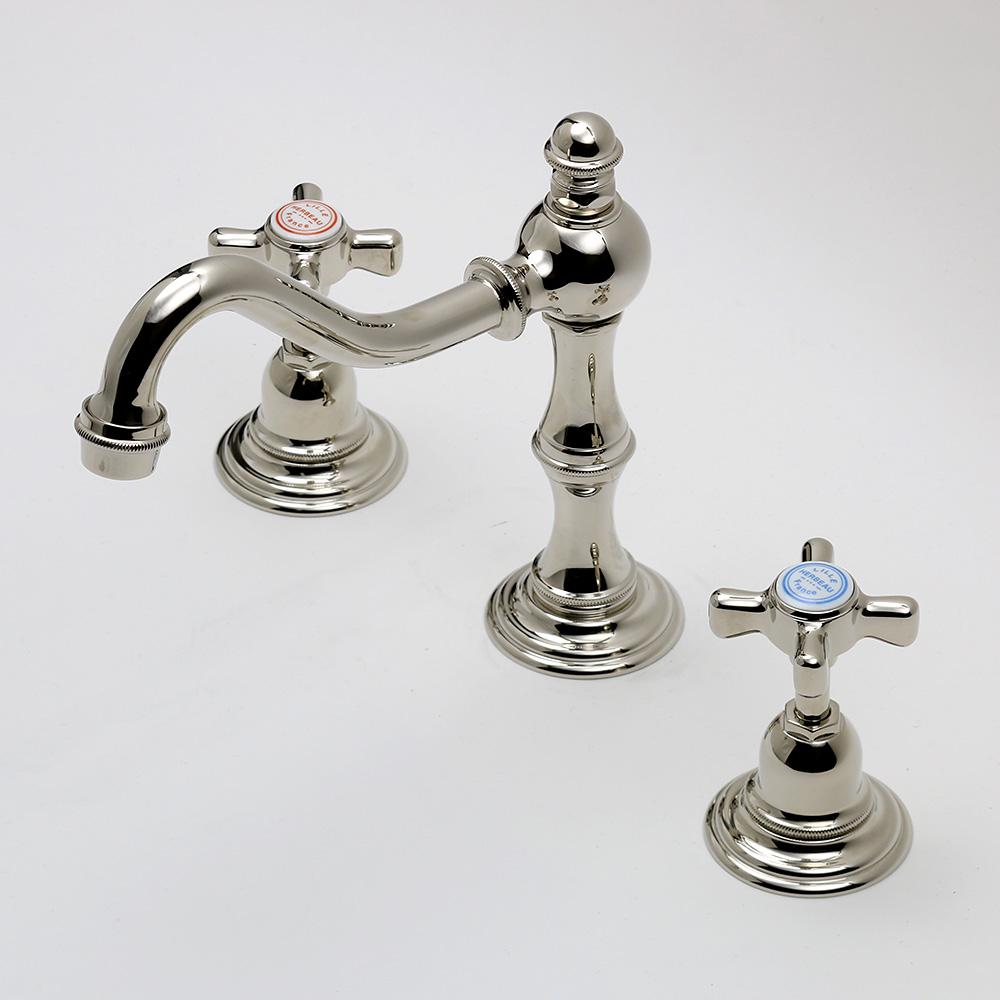 French, nickel-plated brass French, nickel-plated brass |
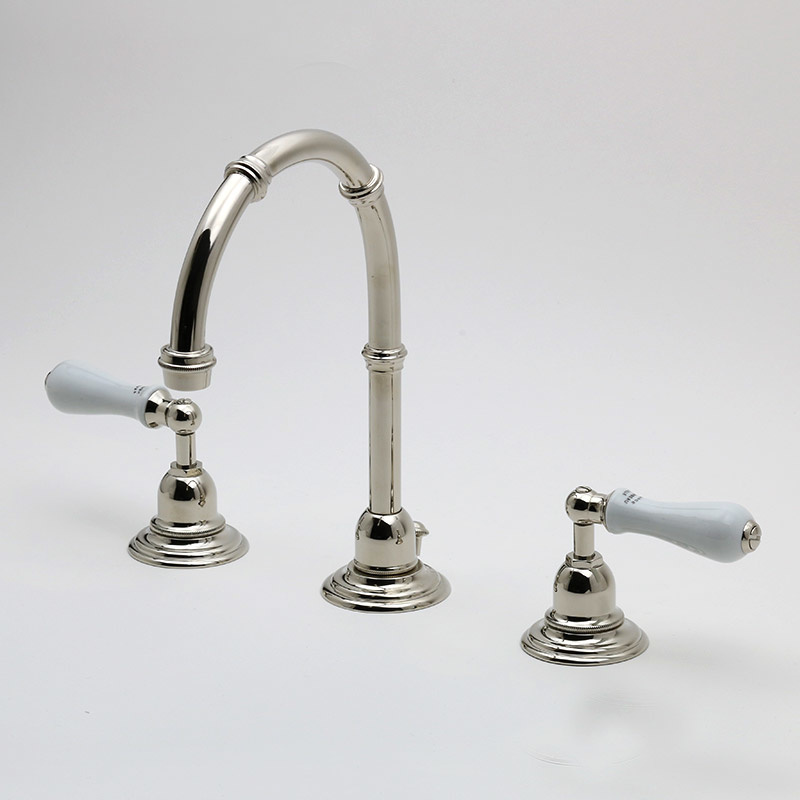 French, nickel-plated brass French, nickel-plated brass |
Finishes
I only use natural finishes and usually prefer an oil or wax or successive combition of the two. Floors might even just receive a soap finish, the same as would be used for periodic cleaning and treatment. And other times no finish at all. Some of my favorite finishes and soaps come from Germany and use only natural ingredients, including some from organic cultivation. But there are also some finishes from the US that can sometimes be used.
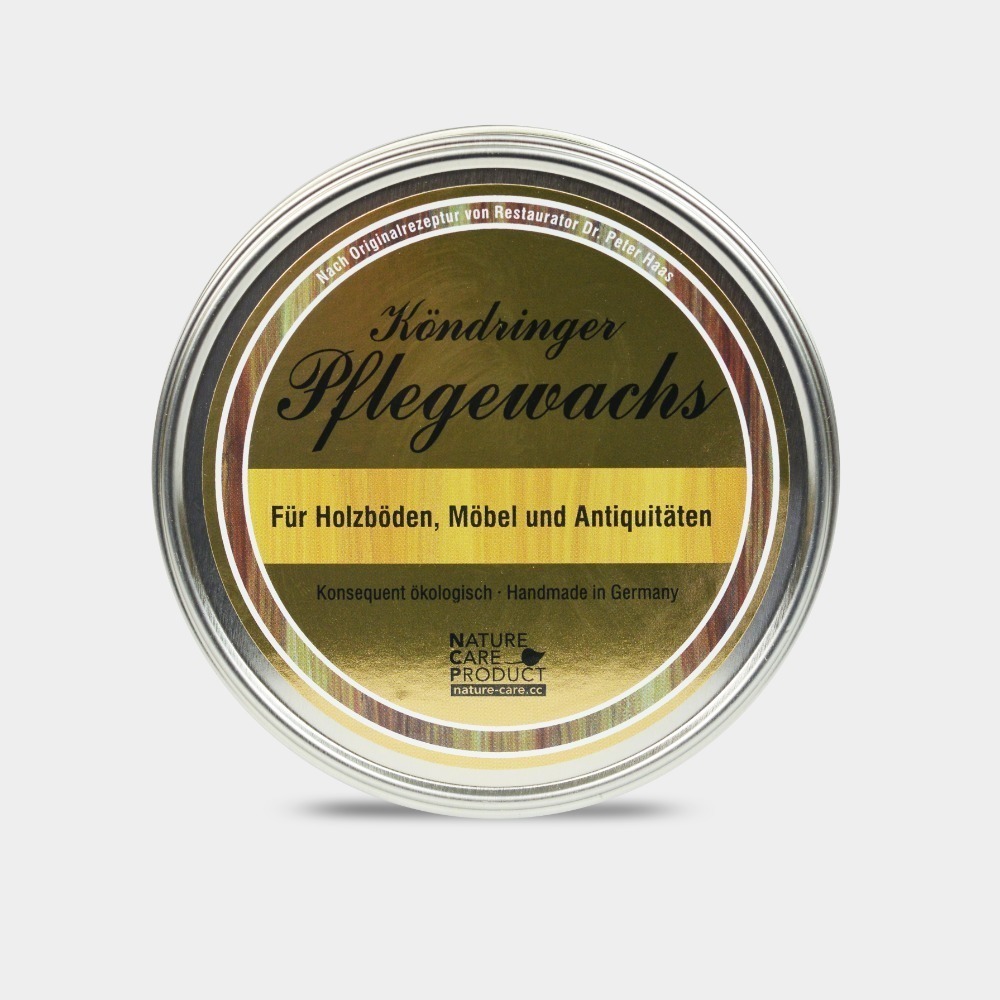 German, blend of natural waxes with some organic linseed oil and orange terpenes German, blend of natural waxes with some organic linseed oil and orange terpenes |
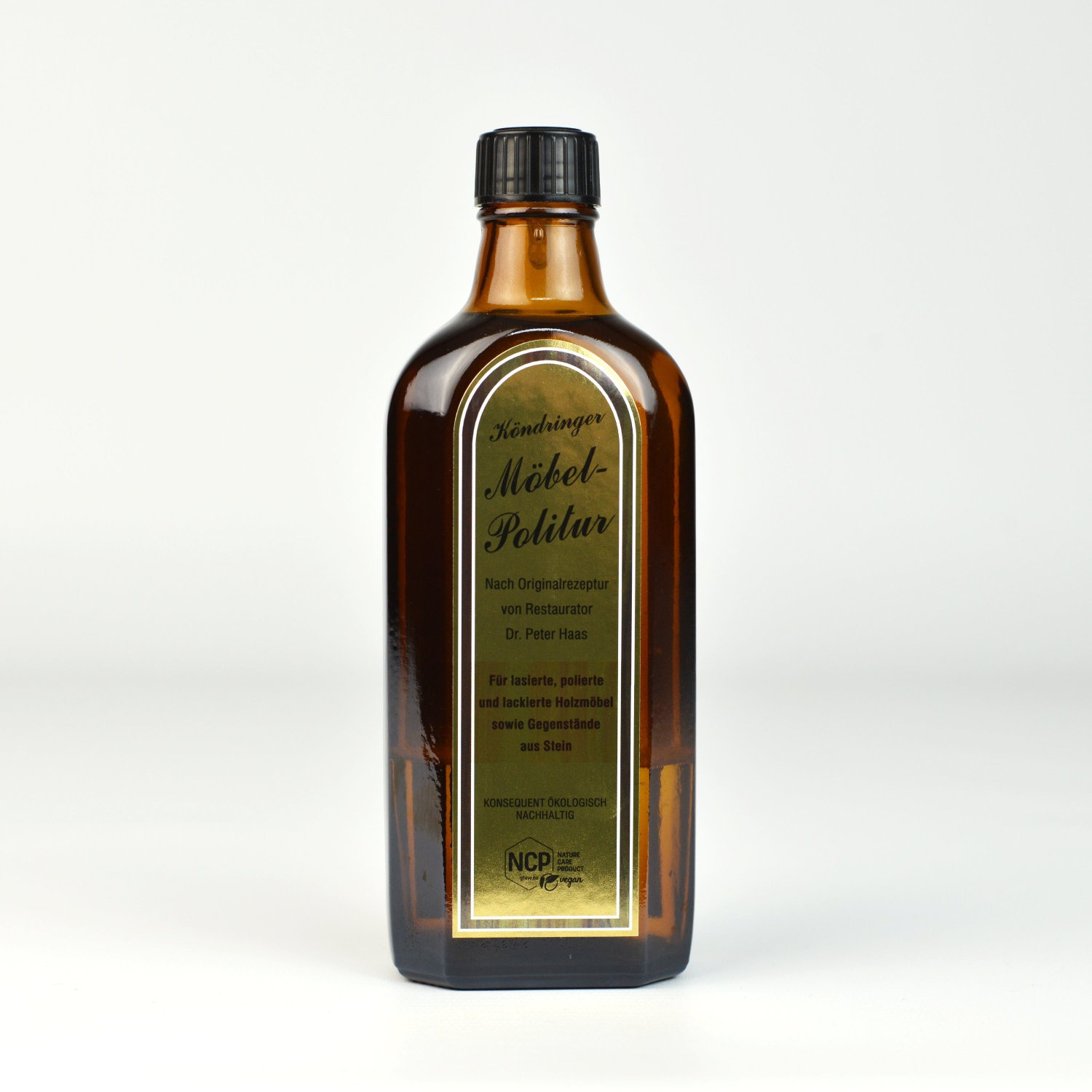 German, organic linseed oil with some organic vinegar and orange terpenes German, organic linseed oil with some organic vinegar and orange terpenes |
Upholstery
Sofas and chairs of 18th century type or earlier, whether antique or reproduction, should be upholstered without springs, just with horsehair, cattle hair, or wool padding. This is often not done properly, nowadays, but I prefer to use the authentic methods.
“All too often old seats have, in the nineteenth century, been fitted with the ugly modern garniture with springs; every amateur worthy of the name who becomes the owner of a chair or arm-chair thus disfigured will have it stripped of its springs and re-upholstered in the ancient manner; if it is a question of a rest-bed or a sofa, the movable mattress will be the only possible thing.” (Roger de Félice, 1923, sounding like me)
For sofas and club chairs of 19th and 20th century type, the natural 19th century method of individual coiled steel springs on wood frame, padded with horsehair, and loose cushions of feathers and down is appropriate. I don’t use synthetic foam or fiber. There are only a couple makers I consider in the US for this method, otherwise I typically look to a handful of English makers. Most of the designs I like for upholstery of this type were developed in the late 19th century to early 20th century, all in use by the 1920s-30s.
This is one of my favorite sofa designs. It is an elegant and versatile design that looks good almost anywhere. You could play around with it and use fringe instead of piping on the seams for a different aesthetic. |
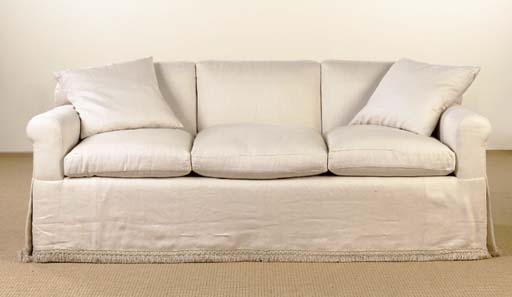 76 in. long/wide 76 in. long/wide |
This is another nice sofa design. Shown with a fixed back cushion, it could also be made with loose back cushions. It is also very nice with a skirt on the covering. It is essentially a sofa version of the chair below. |
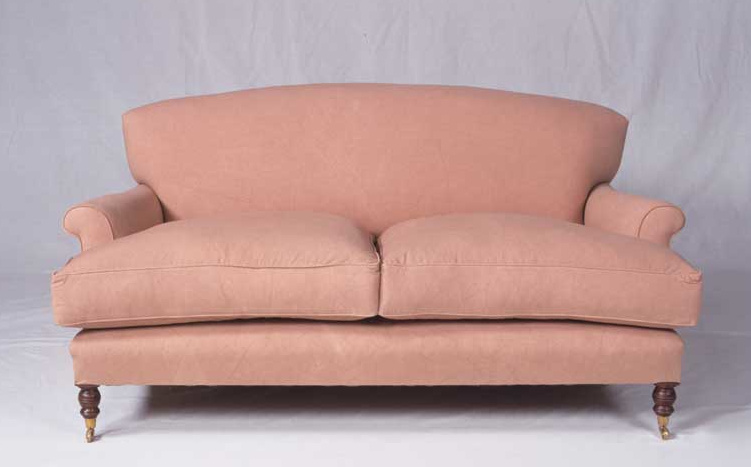 69 in. long/wide 69 in. long/wide |
This is one of my favorite club chair designs, comfortable with nice character. This one has a fixed back cushion, but can also be made with loose back cushion. As with any piece, it can be made with fixed cover, fixed cover with skirt, or loose cover with skirt. |
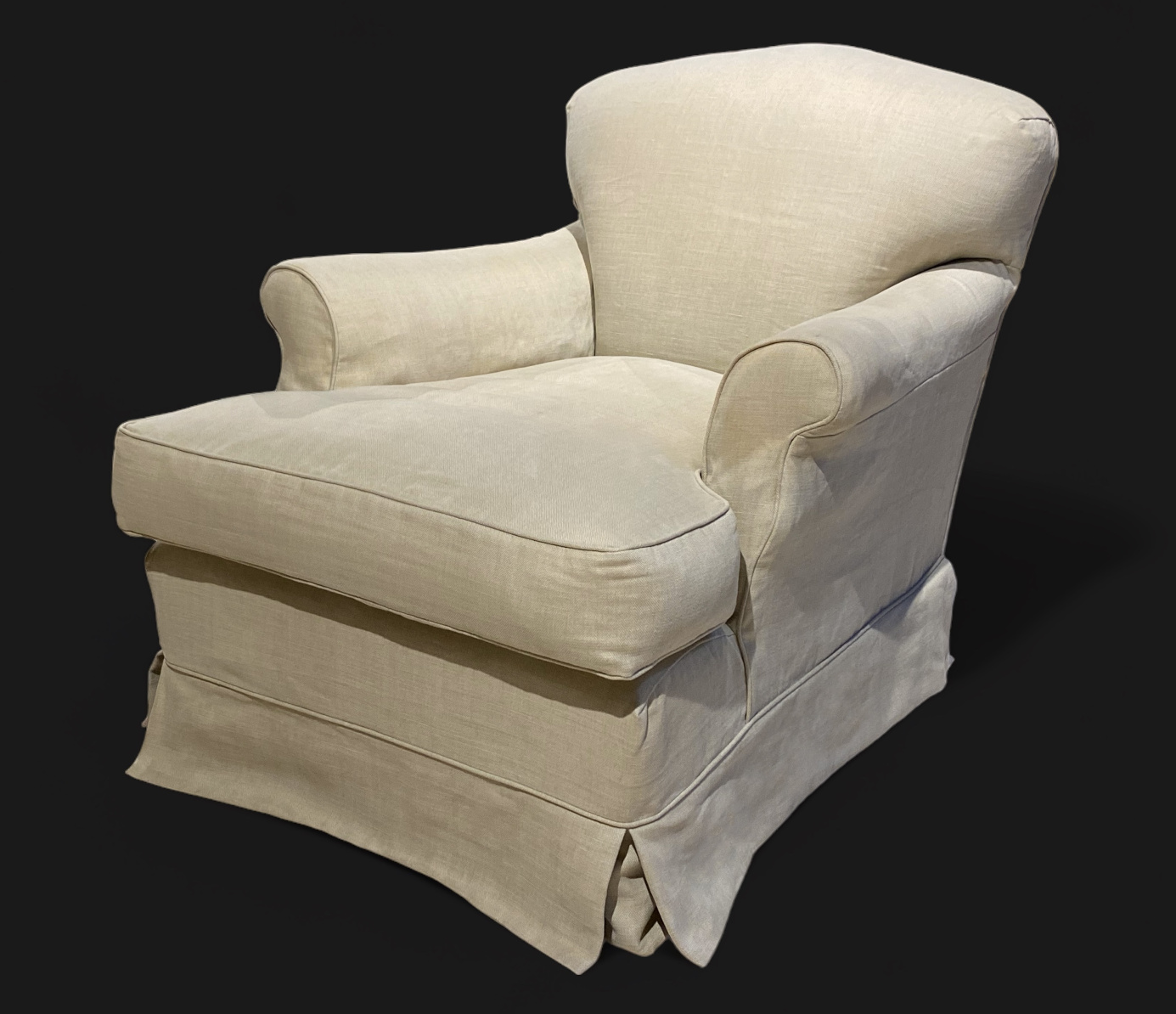 33 in. wide 33 in. wide |
The English Georgian armchair, sometimes called the “Gainsborough” chair, is one of the great pieces of furniture. I like the simple ones with good form. This one pictured below is one of my favorites. A George II to George III period armchair, one of a set of six, originally made for an English aristocratic house, where it still resides. Here it still retains the original upholstery of the stitched horsehair padding (no springs), with covering of figured wool on plain linen ground, welting (piping) of cord wrapped in silk, and edges in close-set brass-domed nails.
 English 18th century, mahogany English 18th century, mahogany |
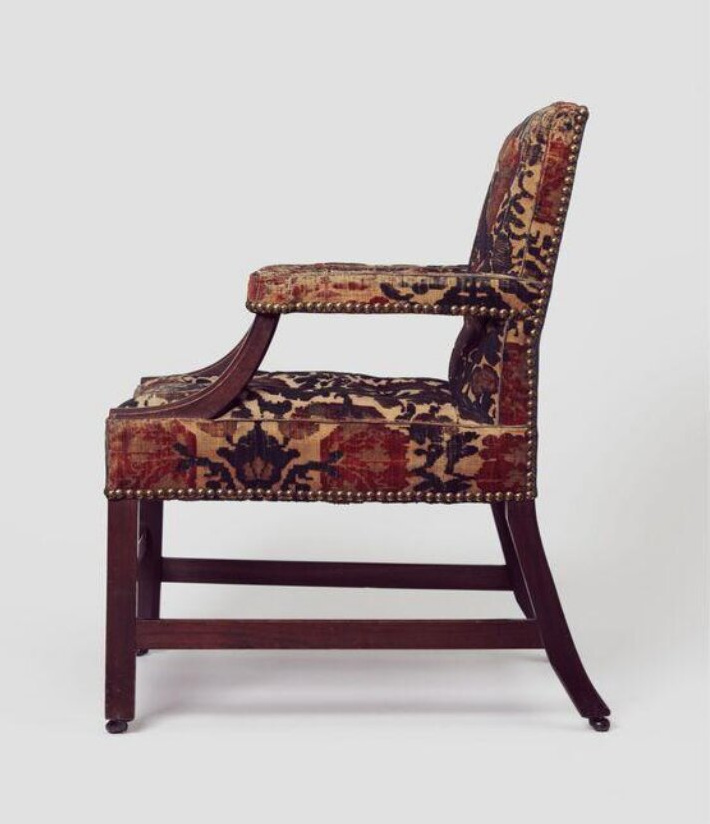 English 18th century, mahogany English 18th century, mahogany |
The English Georgian side chair of simple form (pictured below), similar to the chair above without armrests, makes perhaps the most versatile of all dining chairs. Simple yet elegant, it looks good almost anywhere, harmonizing with many styles, rooms, and tables. It should be upholstered with only the stitched horsehair padding (as the chair above). It can be covered in a nice plain fabric for the fixed upholstery and used this way, and then also have a variety of loose covers made, extending a few inches below the bottom of the seat, to use when desired and vary the feeling and look.
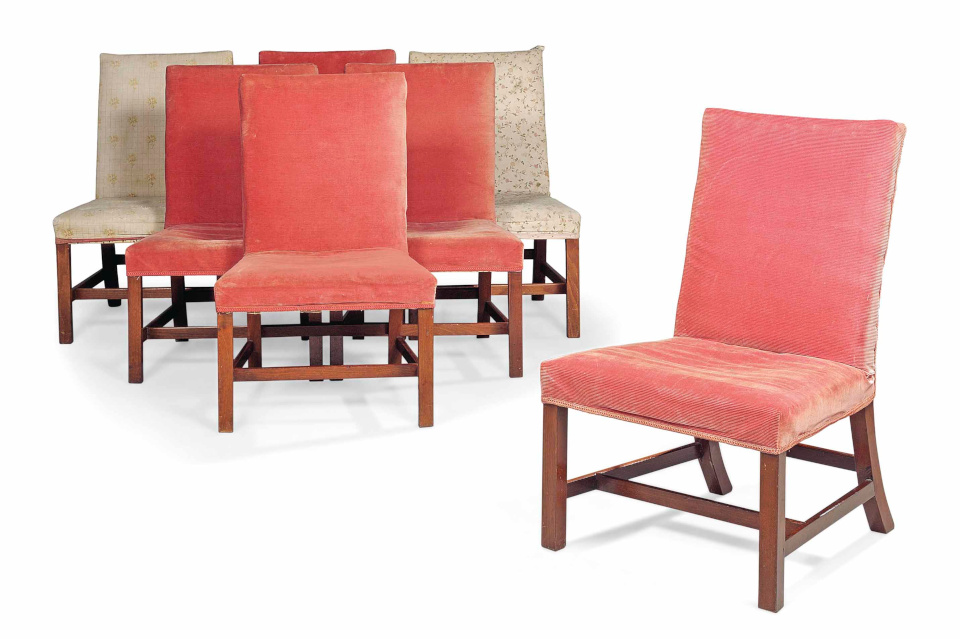
English 18th century, mahogany
Fabrics
When it comes to upholstery fabrics, I particularly like wool, because it is beautiful, durable, and naturally resistant to dirt, moisture, and flame. But of course, hemp, linen, and cotton can also be very nice for upholstery. As with anything, I only use natural materials for the fabrics, without any unhealthy treatments or coatings. As you might be able to tell from the below examples, I don’t generally source from the usual interior fabric collections. The following fabrics are all of medium-heavy weight 10.7 to 11.5 oz/yd2.
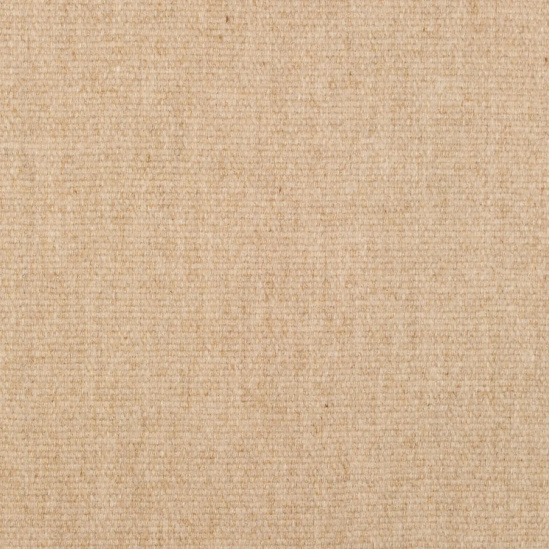 German, 100% wool German, 100% wool |
 German, 100% wool German, 100% wool |
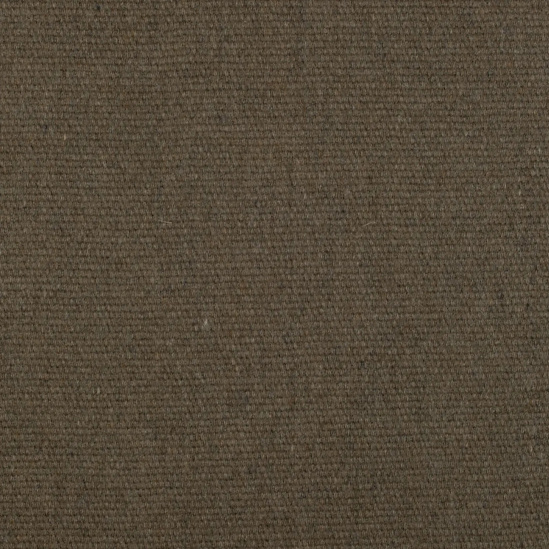 German, 100% wool German, 100% wool |
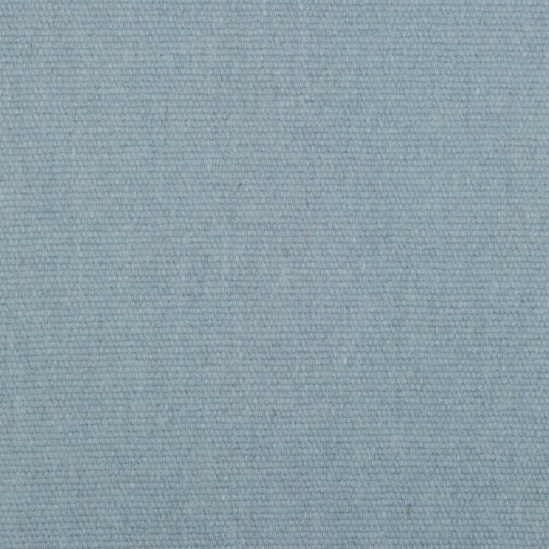 German, 100% wool German, 100% wool |
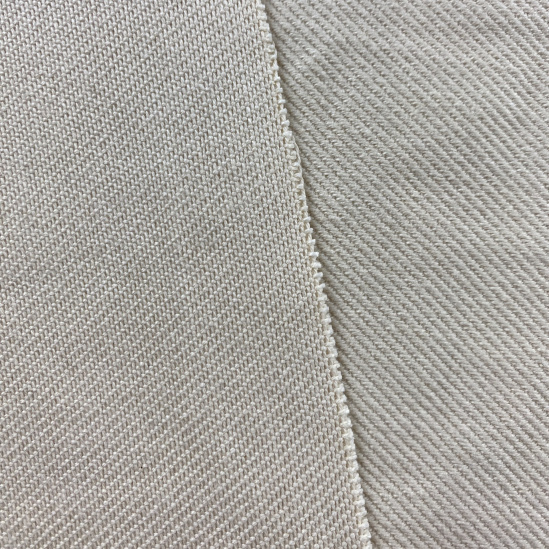 100% Egyptian Giza biodynamic cotton, undyed, showing reverse and front sides 100% Egyptian Giza biodynamic cotton, undyed, showing reverse and front sides |
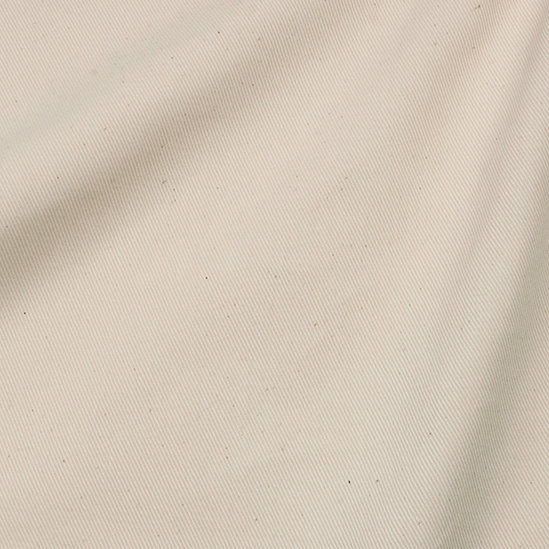 100% Turkish Aegean organic cotton, undyed, gabardine 100% Turkish Aegean organic cotton, undyed, gabardine |
Tablecloths
Fabrics for the table in medium-weight 7.1 oz/yd2 pure linen from an old-school Swedish weaver, one of the only mills in the world to weave only with pure linen and take extra care to accommodate the demanding conditions for weaving in linen. These herringbone fabrics are all woven on undyed warp and look almost solid color from a distance, but reveal the design and variation when nearer. This fabric can also be used for a number of other things, like loose chair covers and pillow covers.
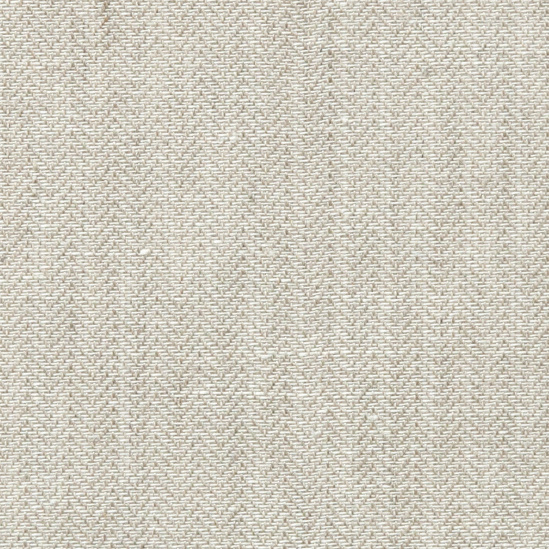 Swedish, 100% linen Swedish, 100% linen |
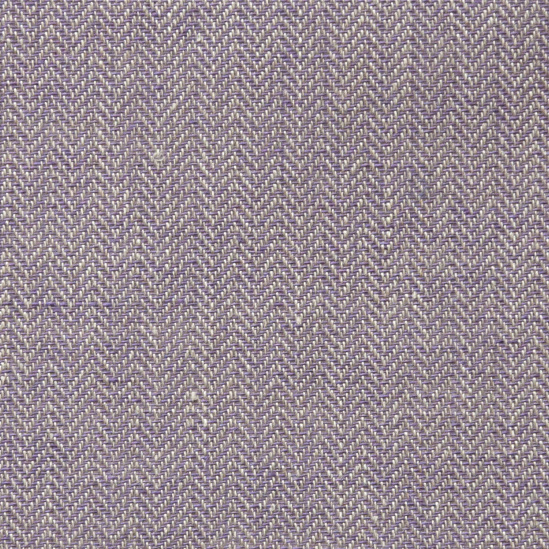 Swedish, 100% linen Swedish, 100% linen |
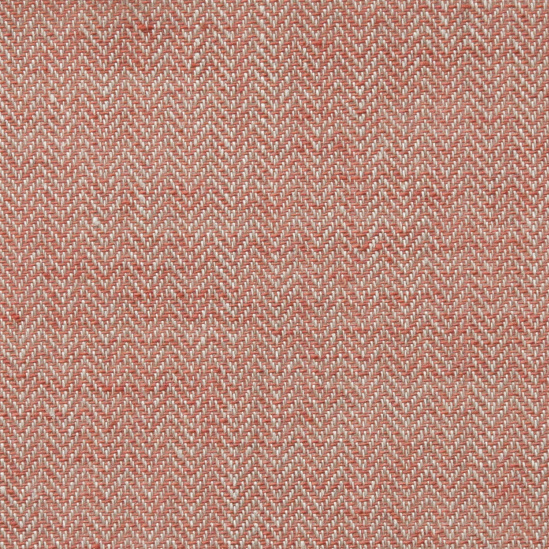 Swedish, 100% linen Swedish, 100% linen |
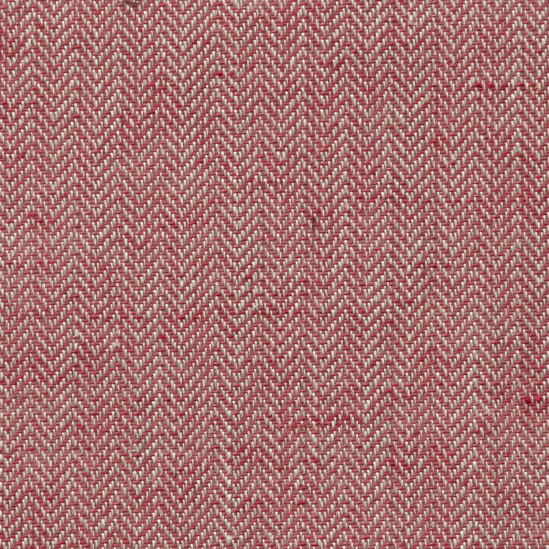 Swedish, 100% linen Swedish, 100% linen |
Furniture
My favorite furniture is in natural solid wood with pinned mortise and tenon construction. This is one of the oldest construction methods, going back to antiquity, and is strong with beautiful character. It can be combined with frame and panel construction to create cabinet pieces.
Excellent antique pieces can sometimes be found, but it is rare that the pieces I like are available, and I usually like to work with reproduction of antique models. There are still a few workshops capable of excellent craft, and it is good to keep the skills going. It also allows to experience what the furniture was like new.
The round tilt-top table is a classic and very versatile piece. It works well in many settings and is useful as a side table or tea table. Here is a George III example, where I like the simple top, the turned design of the column, and form of the legs and feet. I would usually do this in walnut for reproduction. |
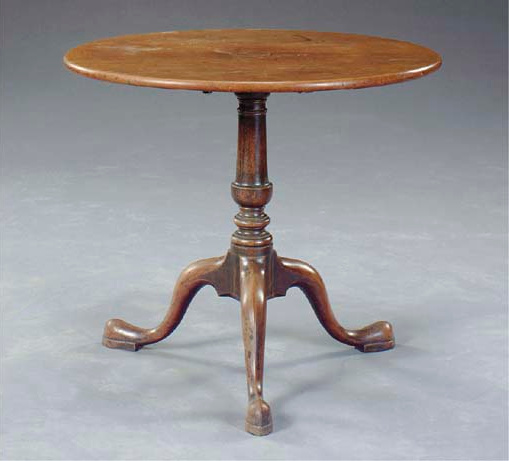 English 18th-19th century, mahogany English 18th-19th century, mahogany |
The classic Louis XIII table, a strong form that I particularly like. Legs and stretchers turned “en spirale”. Good as a side table, writing table, or library table. The placement and choice of hardware for the pulls can change its appearance, and is a good way to add some desired character. |
A Louis XV table from Lyon that has been converted into a writing table with the addition of a drawer and Morocco (goat) leather on the top. What I like about this table is that is has a more robust structure than most Louis XV tables, as well as some interesting simple decoration. Cabriole legs with hoof feet. Could also be nice scaled up to the size of the table below. |
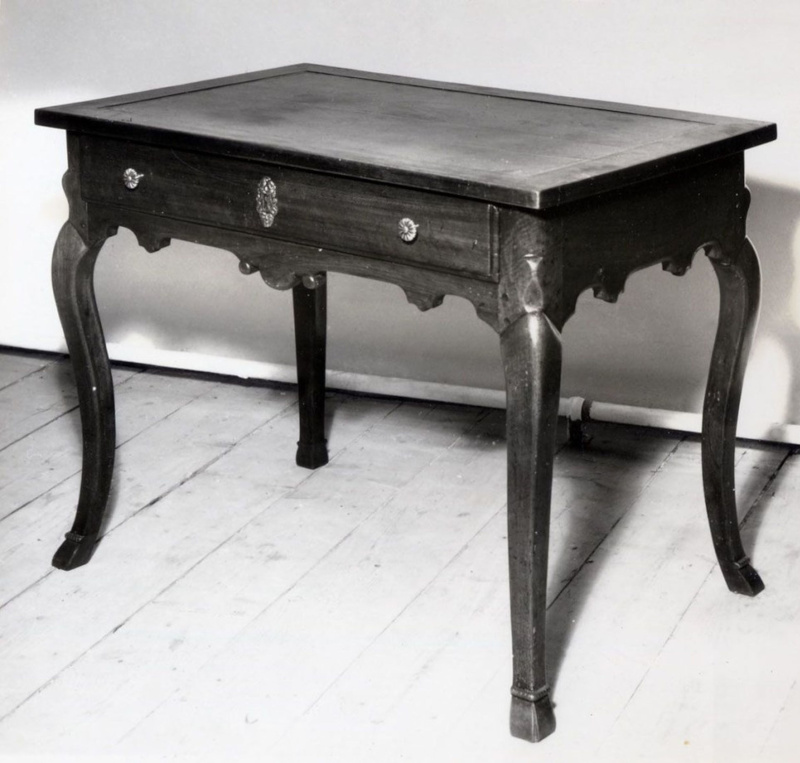 French 18th century, walnut French 18th century, walnut |
A writing table of elegant form and nice proportion. Cabriole legs with ball and claw feet. Nice in the library or behind a sofa in a room large enough to accomodate it. For reproduction in the US, black walnut has a bit different color than European walnut. It might be nice in black cherry for a more reddish brown color. |
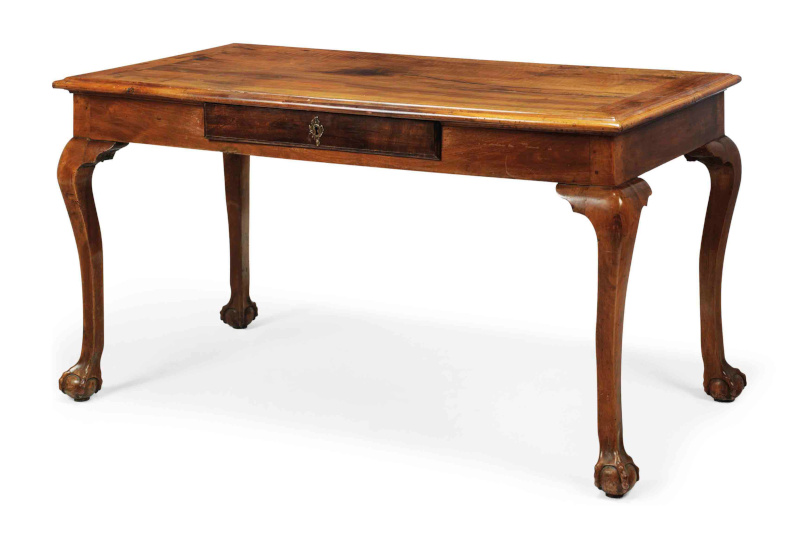 Spanish 18th century, walnut Spanish 18th century, walnut |
A wonderful round table. Originally made for a theological college in England and based upon 15th century French tables. It is of dining table size, but might also be nice scaled down for use as a side table. If newly made in oak, it will be of much lighter color. |
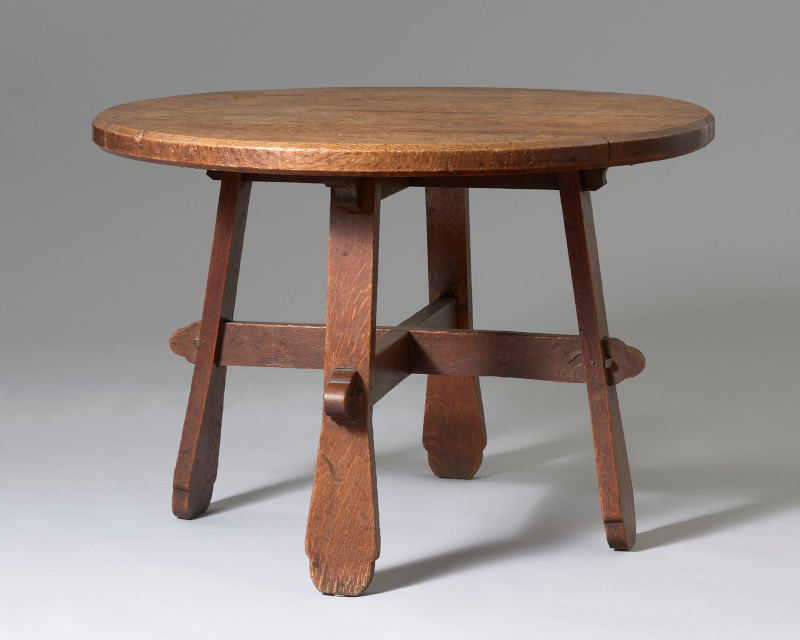 English 19th century, oak English 19th century, oak |
A genuine 15th century Gothic table with curved X-form supports and stretcher with through-tenons and wedges. Nice side table or behind a sofa. As above, if newly made in oak or beech, the color will be much lighter. |
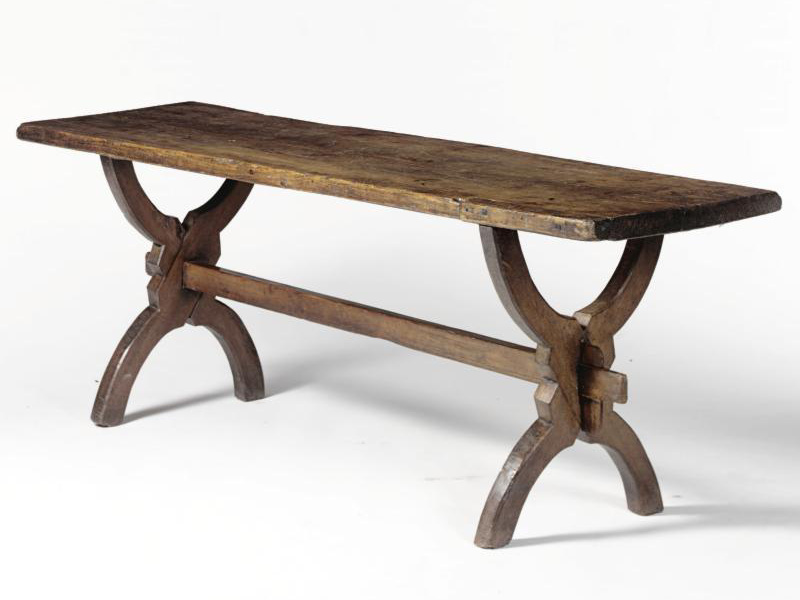 15th century, oak or beech 15th century, oak or beech |
A trestle table in a 17th century form, with nice proportion and just enough decoration to make it interesting. An excellent dining table that leaves nice room for seating. Use exposed to enjoy the wood form or cover with tablecloth for a different aesthetic. |
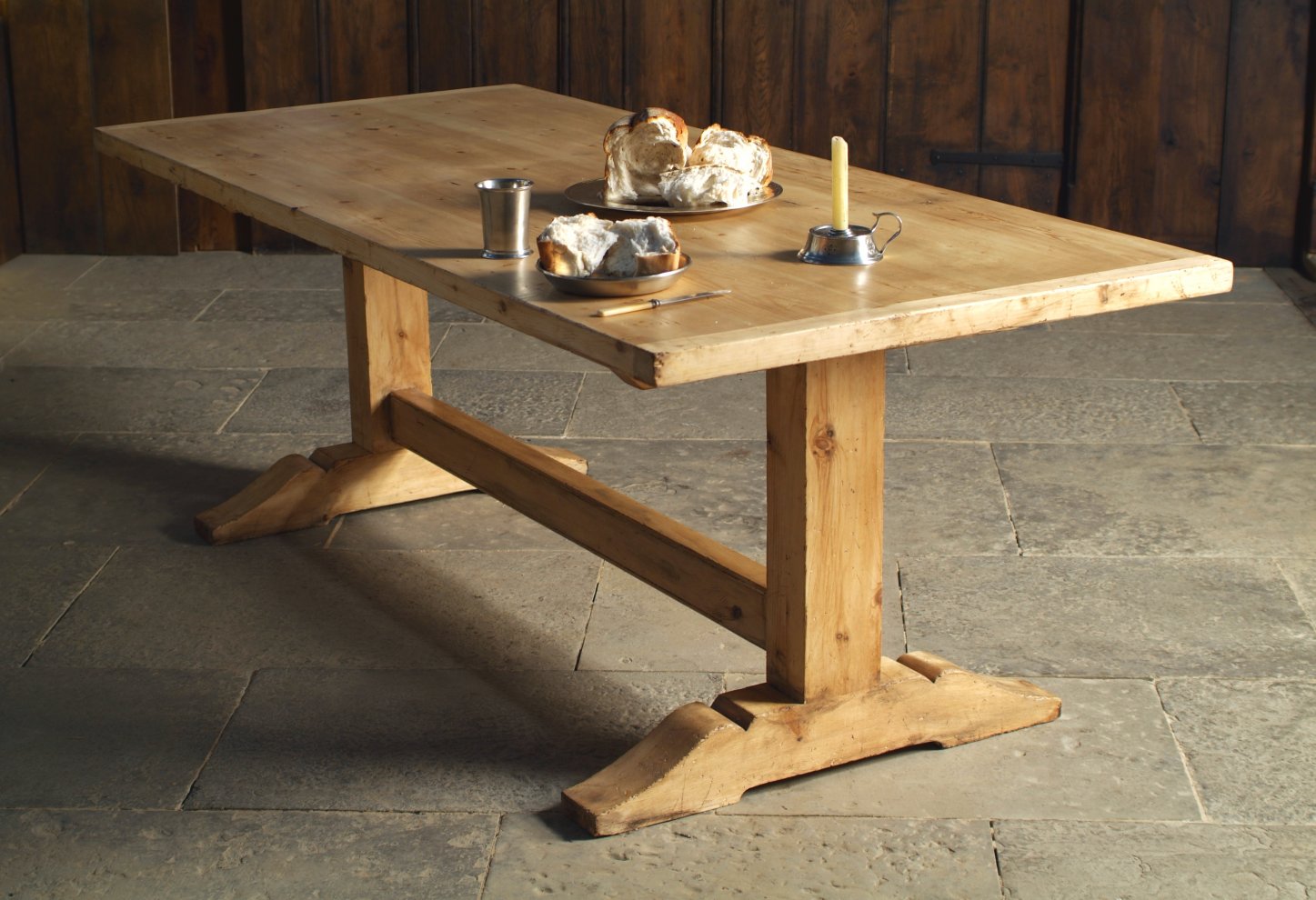 English, oak English, oak |
A piece I particularly like, a chest of drawers in Gothic form, with beautiful, subtle carving on the drawer fronts. This is my favorite type of case piece, timber-framed where the structure and joinery is of large proportion, strong and plainly visible. This can be varied, to create any form of desired chest or cupboard. As usual, if newly made in oak, the color will be significantly lighter. |
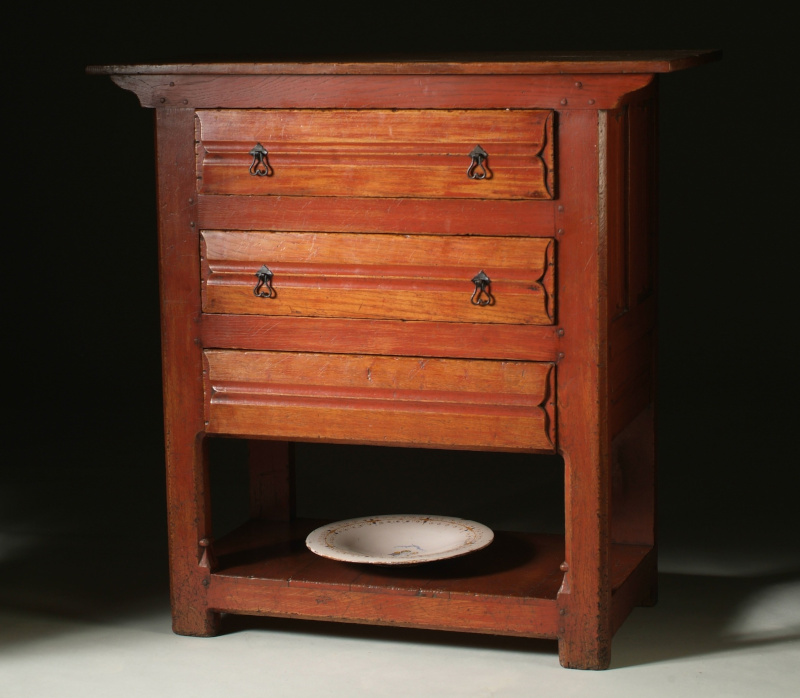 English, oak English, oak |
Another example of a timber-framed case piece (see above). This is a cupboard with three doors and two drawers, carved in relief with Gothic motifs of tracery and rosettes, flowers and fruit. This is a real 15th century piece, photographed in 1924. |
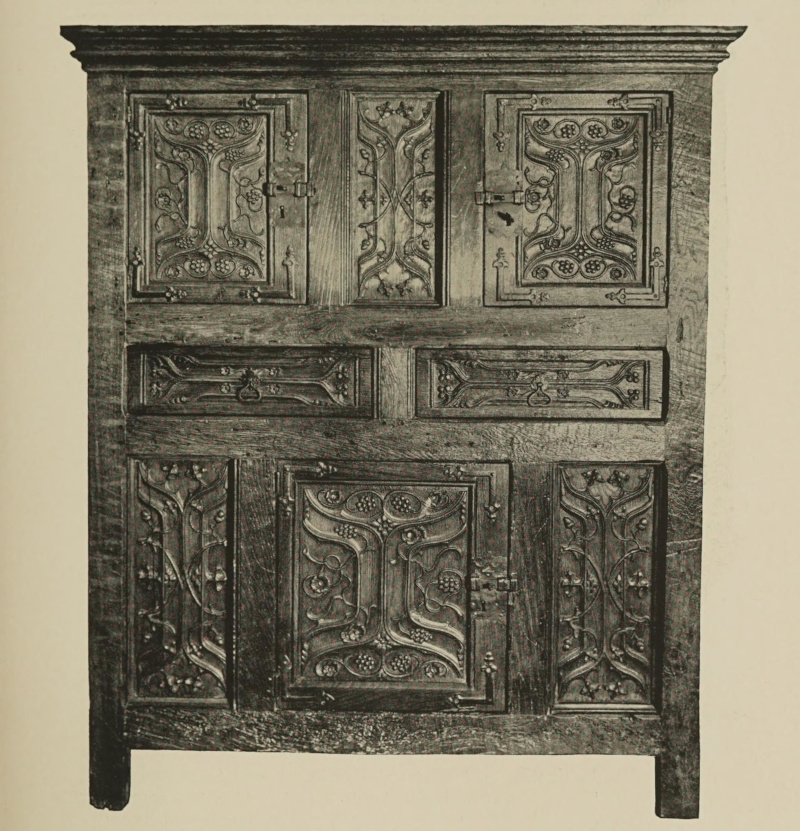 French 15th century, oak French 15th century, oak |
A classic Italian country chair, first designed at the beginning of the 19th century. Today, there are two proper makers of this chair. It is made from air-dried cherry wood with a handwoven cane seat. I am able to have them make the chairs, by special request, without any synthetic treatments or finishes, with all-natural oil/wax finish and no insecticide. It serves as a great casual dining chair or complementary seating anywhere in the house. Also availabe in a side chair model without armrests. |
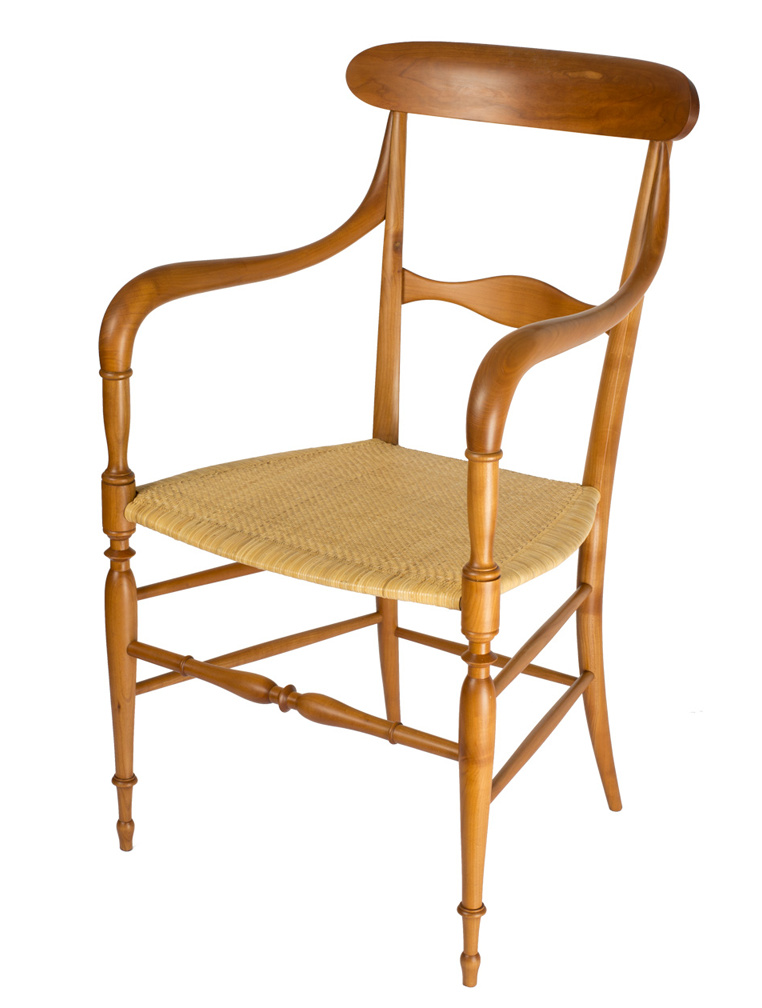 Italian, cherry Italian, cherry |
Lamps
I use English-made brass and mahogany lamps and conversions of new and antique pottery. On occasion, I might also use some Italian-made brass lamps. Always unlacquered brass to patina naturally. I prefer handsewn Matka silk lampshades on uncoated brass frames. Floor and table lamps make for pleasant lighting, and properly handmade lampshades greatly add to their presence and character.
In my opinion, the heated tungsten filament is the only good form of electrical light, so I encourage you to seek out those bulbs that are still available. Energy conservation can come from using modest amounts of light and only using the lights when necessary. And, as they have been for thousands of years, olive oil lamps and beeswax candles are still good options, especially if you want to be truly ecological.
A very classic floor lamp, of adjustable height and available with or without the table. Shown with 16 in. coolie shade, it is also quite nice with an empire shade. Also available as a swing arm lamp with two arms of round section. |
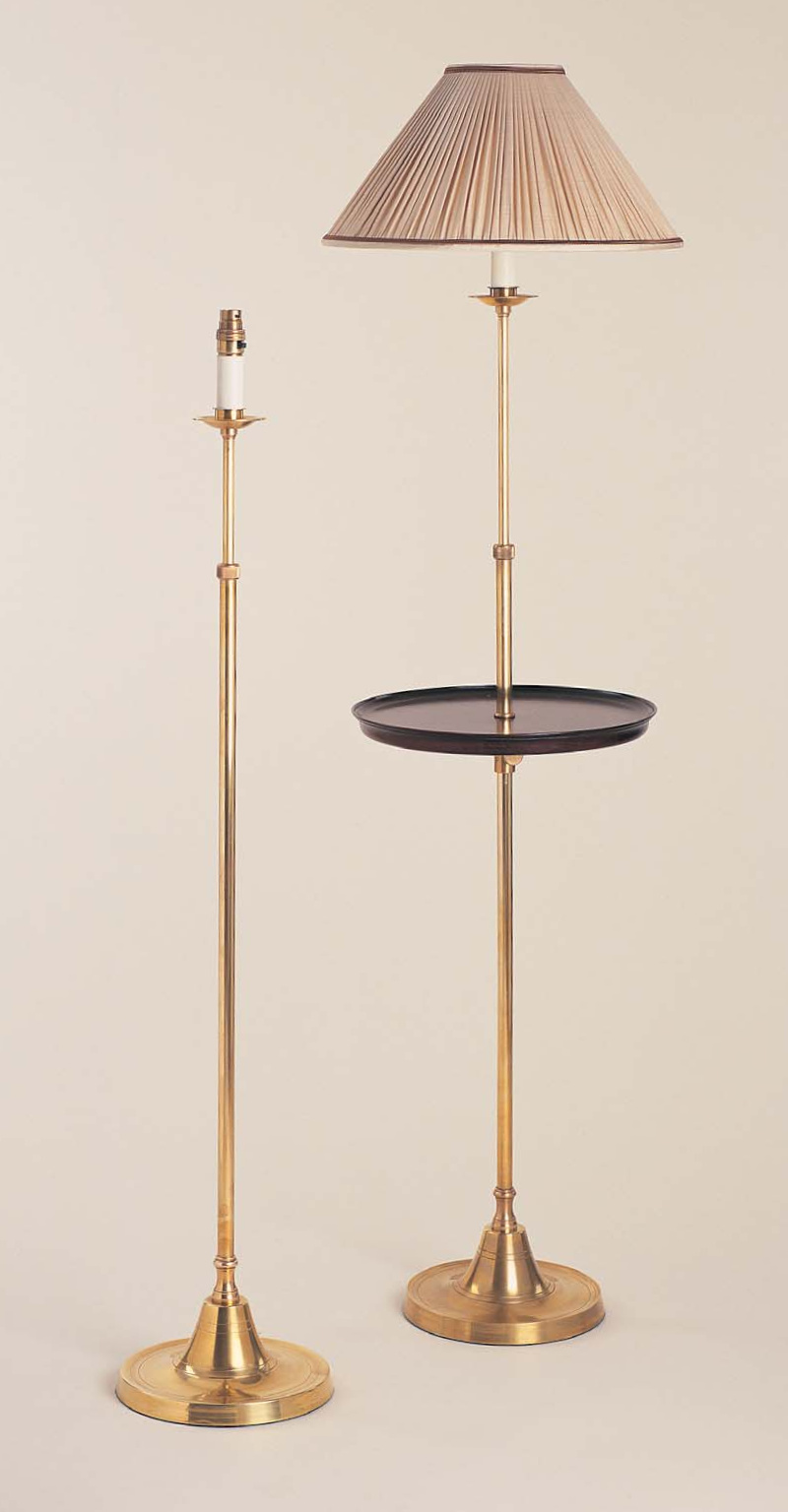 English, brass English, brass |
An excellent table lamp with a classic column of nice form. Shown with real goatskin vellum shade, but I would usually use gathered or pleated silk. |
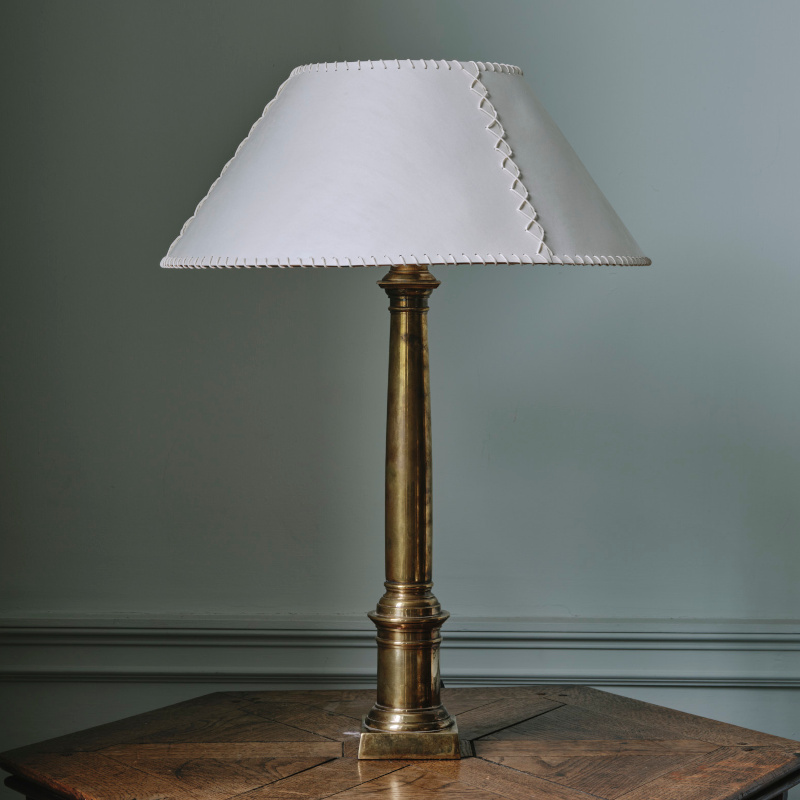 English, brass English, brass |
Solid mahogany table lamps in a nice column form and multiple sizes. The workshop makes these from start to finish, so I am able to have them made with natural oil finish. Can be a nice alternative to brass. |
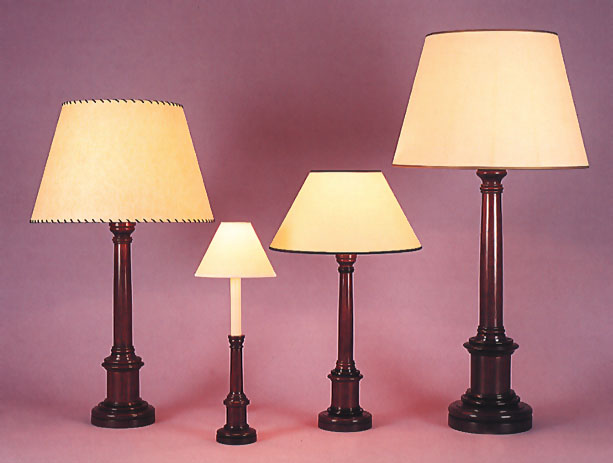 English, mahogany English, mahogany |
Imari (Arita ware) pottery made into table lamps, pictured below. These offer wonderful style, but of course will depend upon what antique pottery we can find at the time.

Japanese 19th century, porcelain
There are also still a few nice pieces of new hand painted pottery being made that I can have made into lamps. Pictured below are a couple of nice, large pieces.
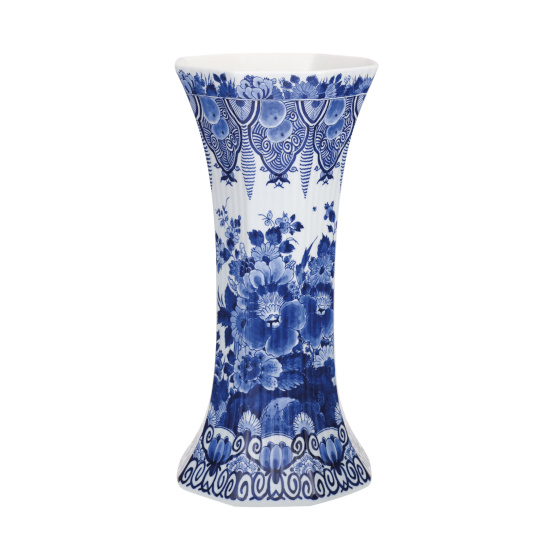 Dutch, ceramic Dutch, ceramic |
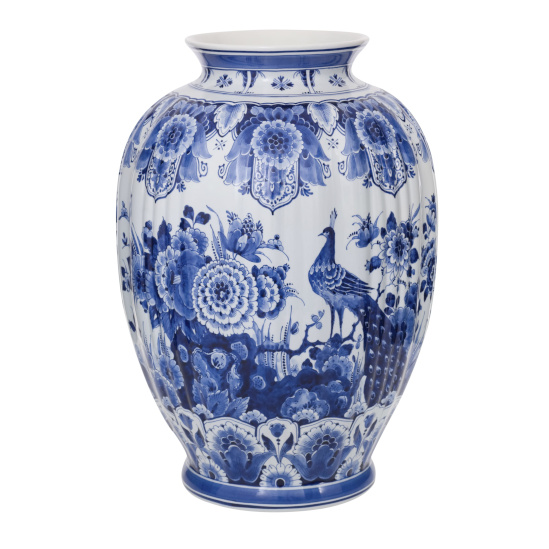 Dutch, ceramic Dutch, ceramic |
If we go back far enough, we start to get the very earthy, interesting pottery that I particularly like. Pictured below are a couple of Han dynasty clay vases from about 2,000 years ago. This shape would also be nice commissioned new with a lighter colored wood ash glaze instead of the original lead green glaze.
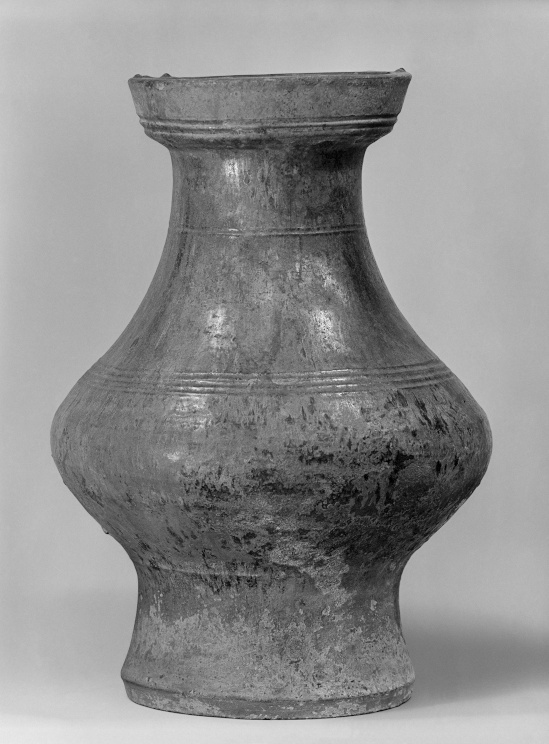 Chinese 206 BC - AD 220, ceramic Chinese 206 BC - AD 220, ceramic |
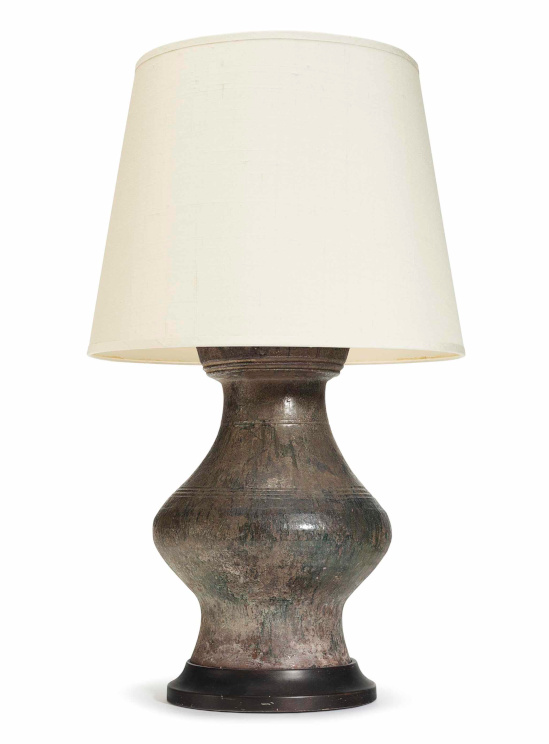 Chinese 206 BC - AD 220, ceramic Chinese 206 BC - AD 220, ceramic |
A new pottery piece that could be made into an interesting and earthy table lamp is a French terracotta jarre Provençale. The unglazed surface would be a bit different from many lamps, but if you love terracotta like me, it might be nice. |
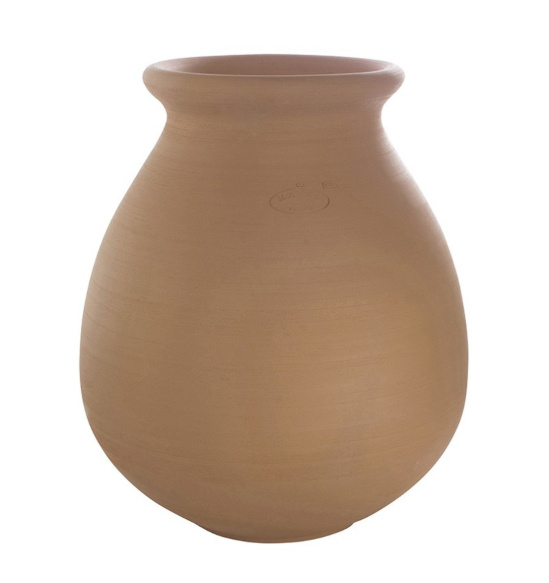 French, ceramic French, ceramic |
I like to use Matka silk for the lampshades. It is a rustic and textural silk that has a wonderful look. The one shown below at left is from an English shop, but I can also purchase various Matka silks directly from India.
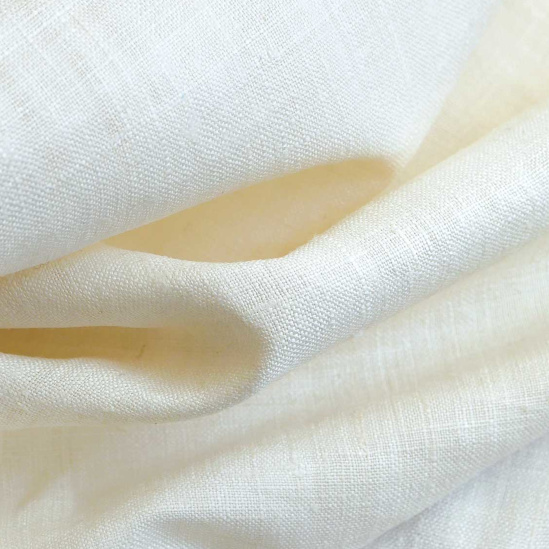 Indian, 100% silk Indian, 100% silk |
 English-made shade English-made shade |
Antiquities and other really old stuff
I like the simple forms and beautiful old materials of ancient Egyptian and Minoan antiquities, as well as some old pottery. Objects this old and elegant and earthy have something of an enigmatic feeling to them, like some timeless truth is being portrayed.
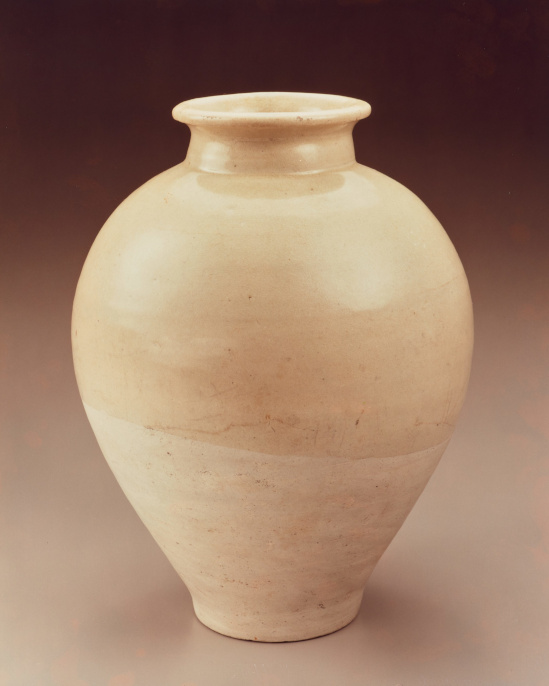 Chinese AD 618-907, ceramic Chinese AD 618-907, ceramic |
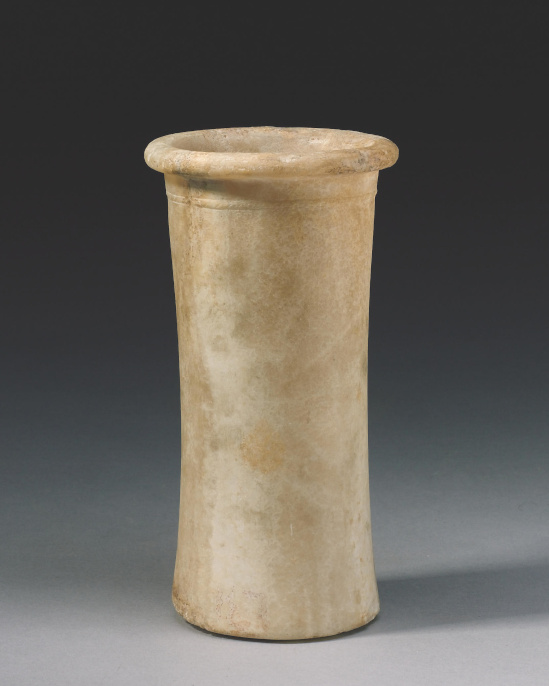 Egyptian 3rd millennium BC, travertine Egyptian 3rd millennium BC, travertine |
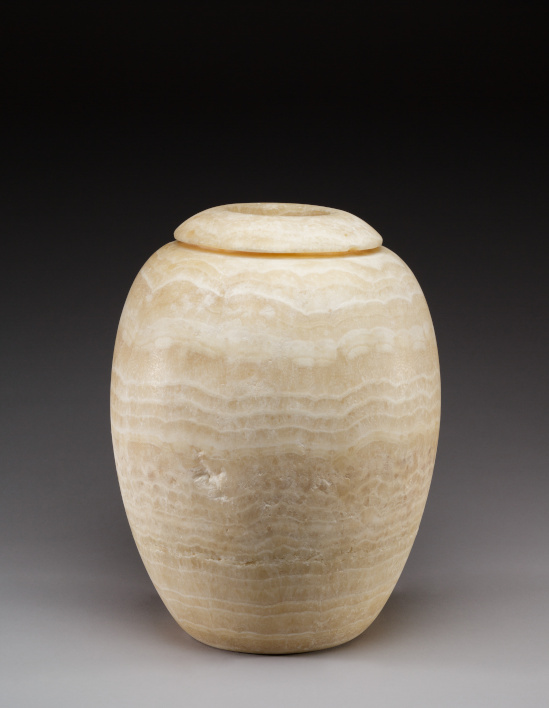 Egyptian 3rd millennium BC, travertine Egyptian 3rd millennium BC, travertine |
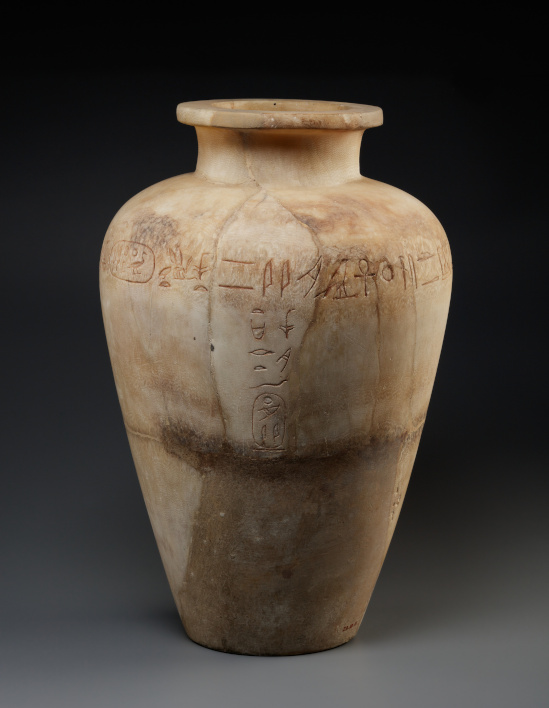 Egyptian 3rd millennium BC, travertine Egyptian 3rd millennium BC, travertine |
mmxxv